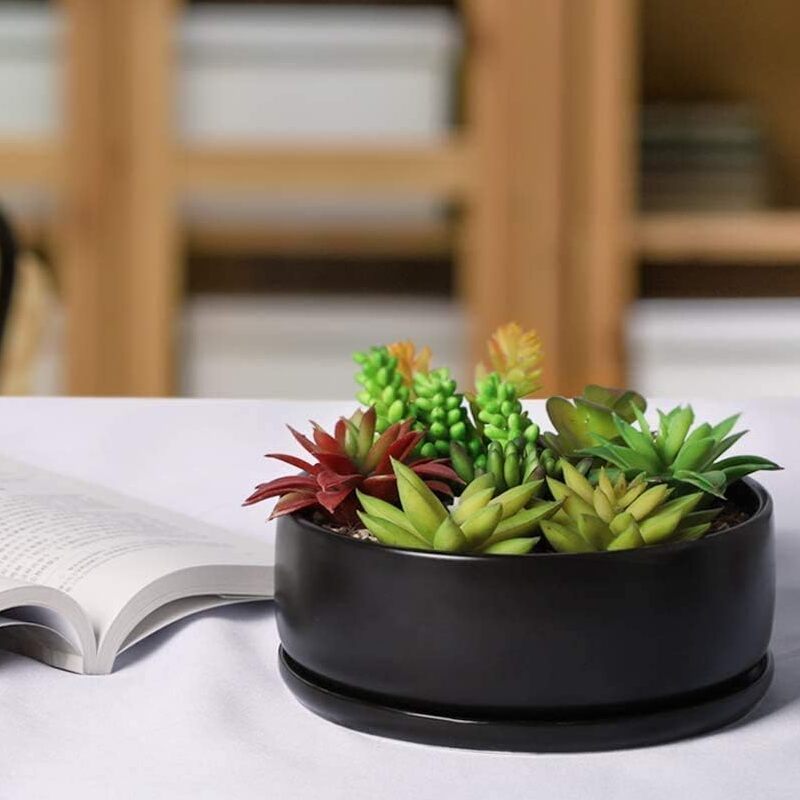
Succulent flower pot selection strategy ②: Material decryption - red pottery/stoneware/porcelain pots, who is the "best landlord"?
Share
In the last issue, we learned how to choose the "house type" for succulents. This time, let's choose the "landlord"! Ceramic pots of different materials are like landlords with different personalities. Some are good at "ventilation and heat dissipation", while others prefer "exquisite decoration". Through 3 sets of comparative experiments, we will help you find the most suitable material partner.

Terracotta pot: A down-to-earth "refreshing landlord"
Core features
✔ Breathable material: The surface is densely microporous, and the water evaporates 3 times faster than a porcelain pot
✔ Natural root control properties: The roots will grow along the pot wall and automatically form a "fibrous root network"
Best adapted scenario
✅ Rainy and humid areas: When it rains continuously, the root rot rate of terracotta pots is 60% lower than that of porcelain pots
✅ Difficult to control water: Don't be afraid of regular watering every week, the pot wall will help you "secretly control water"
Disadvantage reminder

Coarse pottery pot: An "all-round landlord" with both appearance and strength
Material advantages
✦ Breathable and water-retaining balance: The pores are smaller than those of terracotta, and the water evaporates 50% slower, suitable for dry areas / indoor maintenance
✦ Decorative upgrade: Matte glaze / hand-textured style, paired with cute succulents such as Bear Paw and Blue Stone Lotus, a must-have for ins-style balconies
Applicable strategies
▶ Dry areas: Direct use without special treatment, soil can increase 20% peat water retention
▶ Humid areas: Add 2cm volcanic stone to the bottom of the pot, and choose a model with side holes

Porcelain pots: exquisite but "beautiful landlords" who need "special services"
The charm
❶ Extreme decorativeness: glazed painting/relief design, turning succulents into desktop artworks in seconds
❷ MAX water retention capacity: sealed glaze locks in moisture, suitable for lazy people/arid areas

Maintenance required
❗ The ventilation system must be modified:
① Bottom drilling: at least 3 5mm holes
② Soil adjustment: Increase the particle ratio to 60% (volcanic stone + medical stone), and lay a 3cm ceramsite layer on the bottom of the pot
Material selection formula
Make multiple-choice questions based on the maintenance environment:
Rainy and humid / novice → red pottery pot (highest fault tolerance)
Dry and less rain / pursuit of appearance → coarse pottery pot (king of cost-effectiveness)
Indoor landscaping / arid areas → Ceramic pot (need to modify the ventilation holes)
Preview of the next article: Size rule - the scientific basis for "smaller than larger" for succulent flower pots
The material is right, but the size is wrong? The next article reveals the truth about "big pots ruin everything" and teaches you to use the "crown width + root system" dual-dimensional formula to choose the right size to avoid succulents living in "large flat floors" and not growing well! Click to collect, see you next time~
